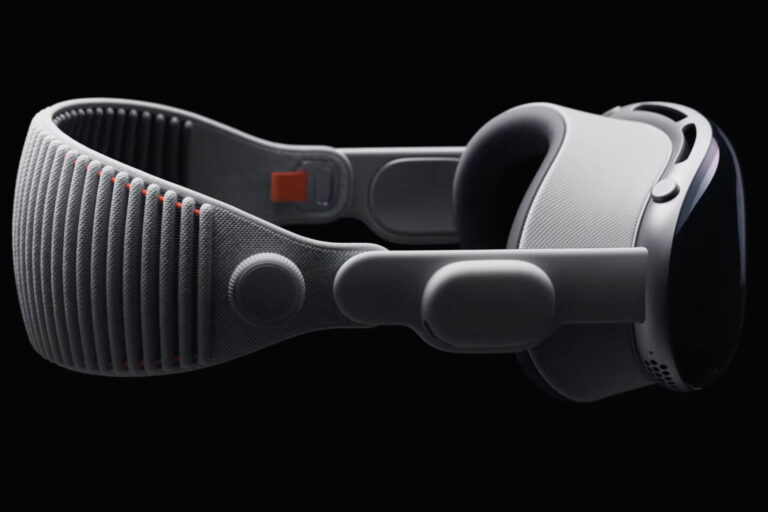The Vision Pro is one of the most revolutionary products of recent years, and Apple’s so-called ‘spatial computing’ platform is clearly something with big potential.
Even so, it feels like the future of a product like this is a pair of glasses where you can see the real world with augmented reality (AR) overlaid on top, rather than having cameras that pass through a version of the outside. Indeed, Meta recently demonstrated Orion: prototype AR glasses with the look and feel of traditional specs that enable you to place content on top of the world around you. Google recently announced Android XR, too.
As Meta said when launching Orion, “That’s the north star our industry has been building towards: a product combining the convenience and immediacy of wearables with a large display, high-bandwidth input, and contextualised AI in a form that people feel comfortable wearing.”
The next step
For its part, the Vision Pro still feels like a slice of the future that doesn’t quite hit the spot – even if visionOS is extremely clever and works so well compared to many previous headsets. But it’s still a new product – and Apple is very much still developing it.
The revised visionOS 2 has plenty more features including new gestures, more immersive environments, a customisable Home Screen plus a redesigned Photos app that enables you to create spatial photos with extra depth from existing images you have in your photo library. You’re also now able to watch Safari-based video on a full screen (which still appears as a floating window) if they don’t have their own app, so great for content from YouTube and Netflix.
The new gestures are particularly welcome – while I’ve found it easy to navigate the home screen, it could be difficult to access things like Control Centre to get to notifications or volume controls. This is no longer a problem.
Gestures are absolutely crucial to the way the Vision Pro works. It’s not a steep learning curve and you do get used to the basics pretty quickly, and it’s really clever how the headset is able to pick them up. In minutes, you’re able to whizz through deleting or archiving a bunch of emails or flick through photos just as you would on an iPad. It feels natural, which is remarkable considering you’re navigating a completely new system.
Using the Vision Pro day-to-day
I’ve been using the Vision Pro for the last few months following its UK launch. After the initial excitement and wonder at the tech involved, it settled down into becoming a ‘nice to have’. It locks you away in what is very much a solo experience, so it’s great for watching stuff. Disney+ and Apple TV+ have native apps, while you can stream Netflix (and the likes of iPlayer or YouTube) through the browser. If there are any frustrations, they are in practical things that you need to do in the real world. Using your iPhone while you’ve got it on is a bit of a problem, since Face ID doesn’t work. It’d be great if the headset’s Optic ID could cover that. And drinking a cup of coffee while you’re wearing it is rather difficult!
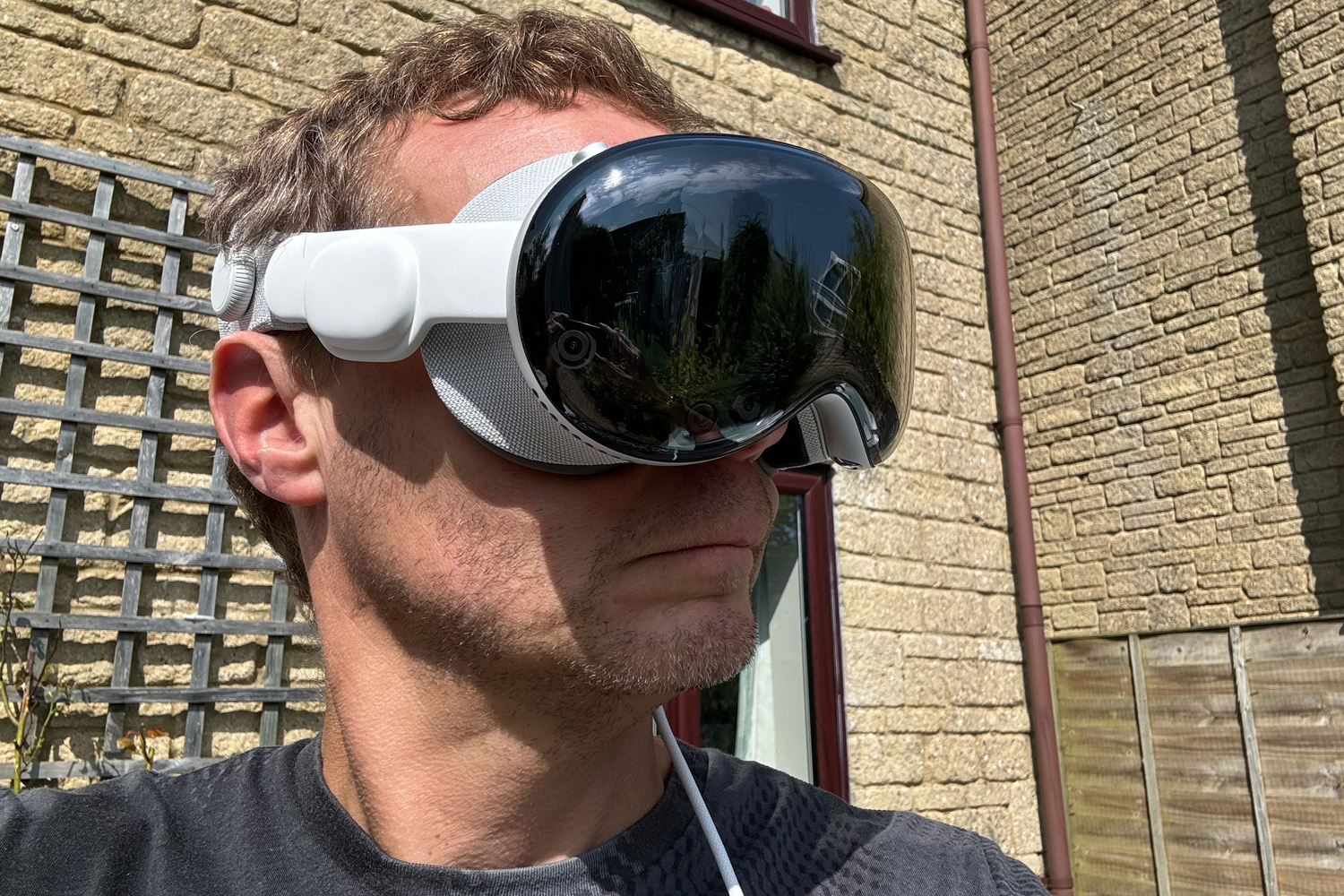
Blending worlds
One other clever feature is enhanced accessory compatibility, so you can use a mouse if you want. Cleverly, the Vision Pro can recognise a MacBook or Magic Keyboard and show it even if you’ve turned up the environment to full immersion. So you can keep typing even if otherwise you wouldn’t be able to ‘see’ the keyboard.
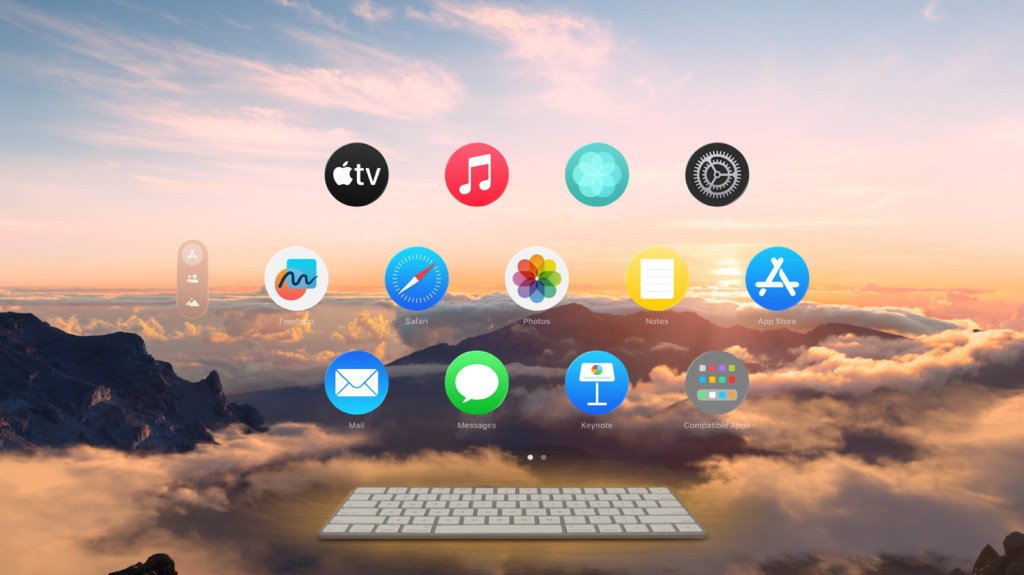
By the way, you can adjust the amount of immersion (and change the virtual environment) at all times. I’ve generally preferred having the surrounding environment – which can show you in a desert or on a mountain, for example – turned down low if I was doing work or practical things, and turned up if I was watching a TV show.
Personas are virtual representations of, well, you. These have also been revamped in visionOS 2, with more accurate skin tones and different clothing colours, while hand gestures have been developed in an attempt to be more natural. The reality is that these avatars are still a little freaky: it’s like someone is appearing in front of you but it’s not actually them, and it’s a little too much of a trip down to the uncanny valley for my liking.
Promising features
One new feature that hadn’t yet appeared at the time of writing was the revamped Mac Virtual Display (it’s been in beta). I’ve been looking forward to using this.
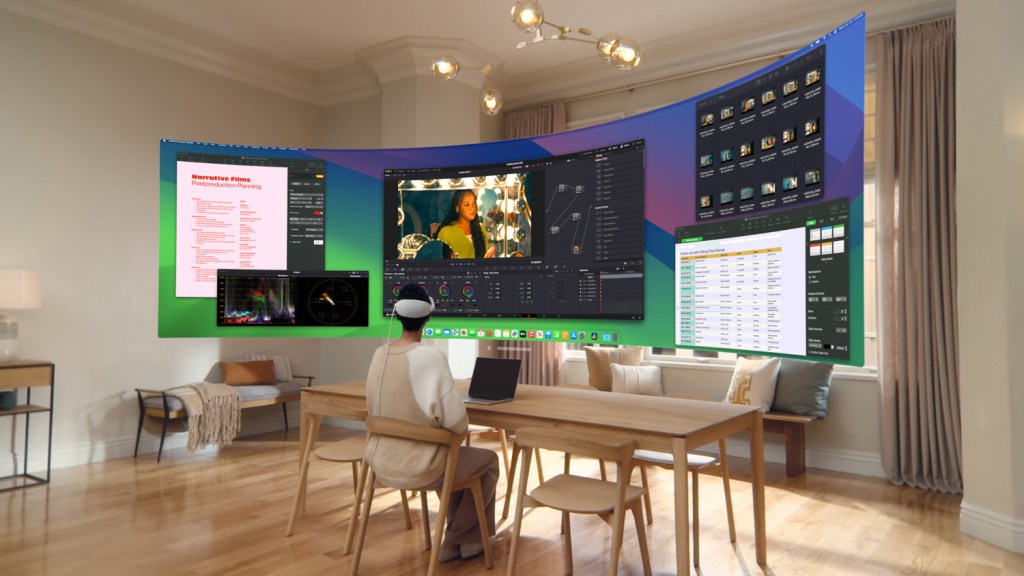
In the first version of visionOS it was possible to use the Vision Pro as a virtual display for your Mac, but it was a straightforward single display that appeared in front of you and, if we’re honest, was no different to using a standard monitor. But the version in visionOS 2 is ultra-wide and will wrap around you. Apple says it’s the equivalent of having two 4K displays side by side, and I’m looking forward to testing this out.
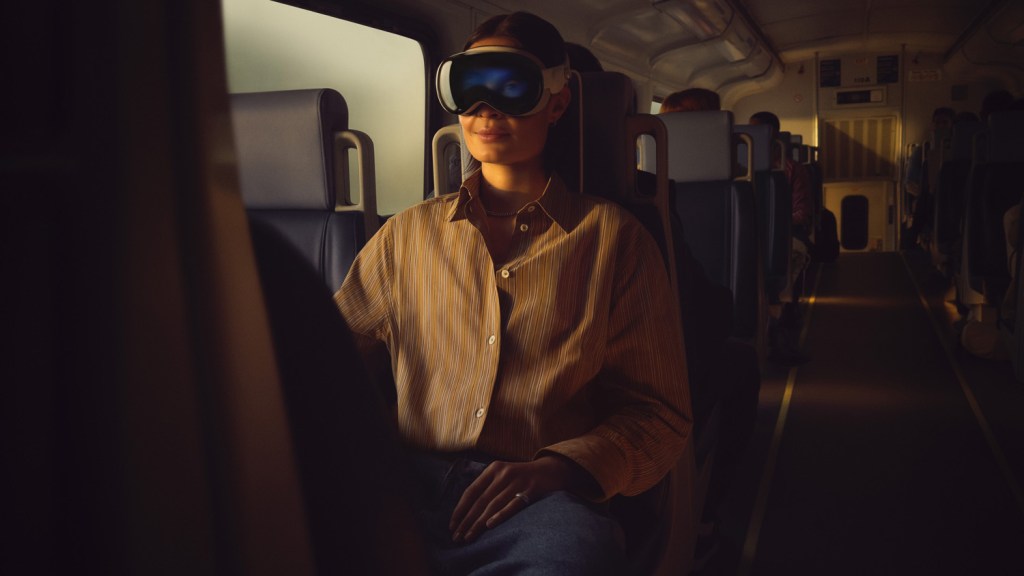
Other new features
You can now AirPlay your iPhone or iPad to the Vision Pro – and you’ve always been able to do the opposite so that someone can see what you’re seeing.The travel mode can now be used on trains, because the Vision Pro is able to compensate for the movement of your environment and keep your view stable.
A clever new feature in the Messages app enables you to look at the mic icon and, when it starts to ‘pulse’, dictate a message. Really simple, really effective.
Multiview is another new feature, launching alongside Apple’s coverage of US sports (MLS and MLB). It will let you watch up to five games at the same time in five different views. You can choose which is the main one and have four others on the side, and switch between them. As with other apps, you can resize the whole layout. I’ve seen this in a demo and it’s a powerful new way to harness wearing a headset – one that takes you outside the traditional setup of ‘TV plus tablet’ for multiscreen action.
Of course, the biggest question is whether the Vision Pro offers you anything more than you can currently do with another Apple device. While that’s a ‘no’ so far, the wraparound Mac Virtual Display and Multiview do offer something extra and are a real glimpse of how the Vision Pro could develop. Can Apple build on this?
Read the full article here
